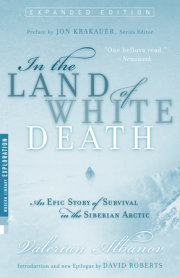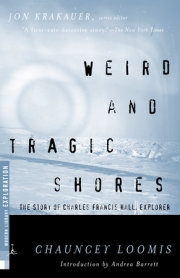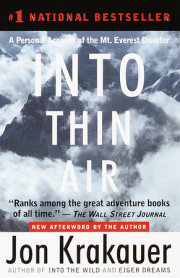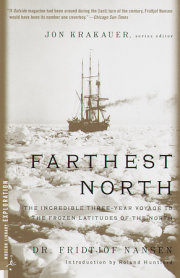STORMThe seventh wave is said to be the worst, the one that does the damage in the turmoil of an ocean gale. Modern oceanographers know this is just a superstition of the sea; they have complex wave-train theories and the laws of wave mechanics to prove it. But still the notion of the seventh wave lingers on; and, clinging to the helm of a small open boat in the heaving waters of a bad Atlantic storm, one's temptation to count the waves is irresistible. The mind longs for anything which might impose a pattern on the jumble of destruction unfolding each time the boat rises to the crest of a roller. A frightening grey vista stretches endlessly to the horizon, rank upon rank of massive breaking waves, each one capable of swamping, destroying, or capsizing. So always, at that brief moment before the boat drops into the next trough, the eye seeks to pick out the seventh waves, real or imaginary, the monsters lifting their heads in menace above their companions, altering the whole line-even the level of the horizon itself-before they too then sink down to hide in ambush.
On that wind-torn evening in late May 1976, it seemed to my tired mind that the wave pattern was changing. Instead of the seventh waves, the sea appeared to be collecting its strength in random groups of three. The leading wave of each group would come rolling down on us, steeper and steeper by the moment, until it could no longer support its own mass. Its crest toppled forward, and then came sliding down the wave front in a self-generated avalanche of foam and released energy. When it struck, the boat shuddered and faltered. The helm twisted savagely in my hand, then went slack, and we were picked up bodily and rushed forward in the grip of the white water. In that dangerous instant the gale clawed at us, striving to slew the boat sideways so that she would be parallel to the advancing wave crests. Should that happen, we were lost. Then the second or the third great wave would sweep over the vulnerable length of the hull, and each time I feared it would be the last wave my crew and I would ever face.
No one could tell us how to steer our boat through the gale. No boat quite like her had been afloat for the past thousand years or so. To a casual observer our craft looked like a floating banana: long and slim, with her tapering bow and stern curved gently upward in an odd fashion. Yet her most extraordinary feature was only apparent if one examined her closely: the boat was made of leather. Her hull was nothing more than forty-nine oxhides stitched together to form a patchwork quilt and stretched over a wooden frame. It was this thin skin, only a quarter of an inch thick, flexing and shifting as the boat moved-just like the skin over a man's ribcage-that now stood between us and the fury of the Atlantic. Watching the waves, I recalled the bleak warning of one of the world's leading authorities on leather science before we started our voyage:
"Oxhide," he had explained in his precise, university tone, "is very high in protein. It resembles a piece of steak, if you like. It will decompose in the same way, either quickly or slowly, depending on various factors such as the temperature, how well it has been tanned to turn it into leather, and the amount of stress imposed upon it."
"What happens when the leather is soaking wet in sea water?" I had asked.
"Ah, well. That I'm not sure," he replied. "We've never been asked to test it. But leather will usually break down more quickly if it is wet, though perhaps the salt in sea water may have a pickling effect. I really don't know...."
"And what happens in the end?"
"Just the same as if you left a piece of steak out in the air on a saucer. In time it will turn into a nasty, evil-smelling blob of jelly-just like a rotting piece of oxhide."
The hull's turning to jelly was now the least of my problems. The gale was showing signs of getting worse; the waves were increasing in size. They were smashing into us more violently; and if the leather hull was not strong enough, the first result would be when the thread holding the oxhides together simply ripped through the weakened hides like tearing the perforations on a cardboard packet. Then the oxhides would peel away like petals, and the wooden frame underneath would spring open like a flower in a brief moment of disintegration. Privately, I doubted it would ever come to that. Much more likely was the possibility of a capsize. Our boat had no keel beneath her to hold her steady. If one of the tumbling wave crests caught her wrongfooted, she would be sent spinning upside down, and her crew tipped into the water, where there was no hope of rescue.
Why on earth, then, were my crew and I sailing such an improbable vessel in the face of a rising gale? The answer lay in the name of our strange craft: she was called Brendan in honor of the great Irish missionary, Saint Brendan, who had lived in the sixth century. Tradition said that Saint Brendan had made a voyage to America, and this astonishing claim was not just a wild fairy tale, but a recurrent theme based on authentic and well-researched Latin texts dating back at least to A.D. 800. These texts told how Saint Brendan and a party of monks had sailed to a land far across the ocean in a boat made of oxhides. Of course, if the claim was true, then Saint Brendan would have reached America almost a thousand years before Columbus and four hundred years before the Vikings. Such a notion, declared the skeptics, was harebrained. To suggest that anyone could have crossed the Atlantic in a boat made of animal skin was unthinkable, impossible, a mere fantasy, and the idea of a leather boat proved it. But the Latin texts were absolutely positive about the boat being made of leather, and they even explained how Saint Brendan and his party of monks had built this vessel. The obvious way of checking the truth of this remarkable story was to build a boat in similar fashion and then see if it would sail the Atlantic. So there we were, my crew and I, out in the ocean to test whether Saint Brendan and the Irish monks could have made an ocean voyage in a boat of leather.
The gale could not have caught us at a worse time. Our adventure had only just begun. Brendan was still untested; and only thirty miles to starboard lay Saint Brendan's own country-the jagged Atlantic coast of Ireland. Thirty miles was much too close for comfort. To a navigator this was a coast to be treated with the utmost respect. The southwest winds beat upon it all year round. Sailing ship upon sailing ship had been lost upon it, their hulls so fouled with weeds after an Atlantic crossing that, like Brendan, they could not tack out to sea against the wind and were driven helplessly ashore. This same coast had destroyed at least twenty galleons in the Spanish Armada, and, compared to a Spanish galleon, our Brendan was a seafaring nightmare. We could not sail upwind, and if the gale swung into the west, we would be driven as helplessly as a leaf down onto the iron-bound cliffs and half-submerged reefs which now broke the steady onslaught of the great Atlantic rollers hissing past us after their immense journey from the far side of the Atlantic. In such a gale and seaway even a modern yacht would have been hard pressed to hold up against the weather. For us in a medieval boat there was no choice but to turn tall and run helter-skelter before the gale, driven along by a single square sail slung as low as we dared, while Brendan tobogganed down the waves.
I looked at my crew and wondered if they appreciated the situation. George, I knew, was well aware of the danger. He was one of the best sailors I knew, and we had sailed many miles together on small boats. For that reason he now held the job of sailing master on Brendan, the man responsible for getting the very best performance from the boat under sail. Rolf, too, knew the risks. He was from Norway and normally spent his summers exploring his country's coastline in a massive sailing boat built at the end of the last century. But Peter, the cameraman of our team, worried me. Not so long ago, Peter had sailed single-handed from England to Greece in his own boat, and so he was no stranger to the sea. But now he was looking very glum. Partly, I suspected, he was concerned about our situation; but even more he was feeling the pain from damaged muscles that he had strained two days previously as we were rowing Brendan. Now his face had a grey look, and clearly he was very uncomfortable as he tossed about with the constant motion of the boat.
Arthur, the youngest member of the crew, was totally oblivious to any danger, for the very good reason that he was laid low by seasickness. Rarely had I seen anyone so miserable. Brendan had a most peculiar sea motion, more like a life raft than a conventional vessel. She heaved and swayed, then bobbed, swayed, and heaved while Arthur curled up in misery. His eyes screwed tight shut, his body slumped under the gunwale, every now and again a burst of spray swept over him, running down his face and dripping off his oilskins. Only when his turn came to go on watch did Arthur take an interest in his surroundings. With a visible effort of self-discipline he hauled himself into a sitting position, clipped on his lifeline, and dragged himself to the helm. Secretly I applauded the effort of will power, but it was obvious that only three men from a total crew of five were in a fit state to handle Brendan if the gale picked up.
One difficulty was that it was almost impossible to get any rest between watches. Brendan was essentially an open boat, swept by the spray and the wind. Just behind the stubby mainmast was a low tent-like structure with room for three men to lie down, head to tail like sardines. But here we also had to find space for our spare clothes, our cameras, and sleeping bags, and all the navigation equipment. Besides, whenever a wave broke over the stern, it had the nasty habit of sweeping forward and dropping a thick dollop of water right into the shelter. Farther forward by the short foremast there was another small tent, not much larger than a good-sized kennel. Here the two other crew members were expected to sleep, but there the leaks were even worse. Each time a wave broke against Brendan's bow, it sent a fountain of cold water squirting up under the tent flap and thoroughly doused the occupants.
When my turn at the helm was over, I crawled into my berth in the main shelter, wedged myself into position, and lay there worrying: Our voyage had started barely a week ago and already we were taking a hammering, which I was not sure the boat could stand. Where I lay in my sleeping bag with my feet and head touching the bulkheads under the thwarts, I could feel them shifting as the boat rose and fell with the waves. What disturbed me was that the bulkheads were shifting in opposite directions. It was uncanny. The boat was like an animal, perhaps a whale, and I was lying inside its ribs like Jonah and feeling the boat change her shape to meet the enormous pressures of the sea. All around I could hear creaks and groans from the wood and the leather. The stresses and strains were colossal. The sides of the boat pumped gently in and out as though the Brendan were breathing. I tried to think rationally, remembering the theory that the boats of the Vikings had been built on exactly the same principle. It was said that they had flexed with the sea and so had sailed faster. But the Vikings built their boats of timber, and no one knew if leather could stand up to the same sort of treatment. How long could Brendan's structure hold together? There was no way of telling. And it was little comfort to remember that this was precisely why we were out in Brendan, hoping to discover the truth by practical experiment.
I closed my eyes, and immediately my sense of balance told me that the sea had become worse. I could feel Brendan being overtaken by a wave group of three. The first wave swelled up, and it seemed ages as Brendan climbed its face, lifting up and up in apparent slow motion as if she would never clear the top. Then came the agonizing pause as she teetered- on the brink, half the length of her hull poking out over the face of the wave, suspended in the air as if she would snap in half. Finally there came the slithering surf ride, caught helplessly in the tumbling crest, with the helmsman fighting to maintain control and Brendan heading downwind, and the log went spinning madly up to its maximum reading of twelve knots. After what seemed an age, the main body of the wave swept on, released Brendan, and casually dropped her into the trough behind it, only to be picked up and hurled like a tormented plaything through the whole process again and again by the second and third outsize waves.
Once, when George was at the helm, a wave crest caught Brendan and without warning spun her back to front. "Help! Help! We are sailing backwards!" George roared. Peter and I bolted out of the cabin. Lightly dressed, we were quickly soaked to the skin, but we had to bring the headsail under control. We swarmed forward to where the sail was pinned against the mast by the force of the gale, and with brute strength wrestled it around again. With a soggy thud the sail bellied out, and began to pull Brendan out of trouble. Slowly, very slowly, the boat wheeled away downwind, and for two aching wave-lengths we watched and waited as the vulnerable side of our leather craft was exposed to the rollers. But they swept under us without doing any harm, and we went careening onward.
Night came. A foul, black night complete with driving rain that reduced visibility to a few yards, broken only by the flashing white manes of the breakers and distant flares of lightning. As I returned to my sleeping place, my tired mind failed to register when Peter, who had taken over the helm, remarked that he thought he glimpsed ship's lights, no more than tiny pinpricks a long way off to port. I mumbled to him to keep an eye on them and to call me if they came any closer. Then I crawled into my sleeping bag and closed my eyes, feeling utterly limp.
ìJesus Christ! Where the hell did that come from!" Peter's gasp woke me instantly. Something was wrong. In a mad scramble I tumbled out of the shelter, and found Peter heaving desperately on the tiller. Rolf, the rain trickling down his glasses, was gaping into the night. There, less than a hundred yards away, and with all her lights blazing, was a large factory trawler bearing straight down on us. Her bows were sending up huge bursts of spray as she slammed down on the waves, and she was pitching and rolling wickedly. It was impossible that she could have seen us in the murk. Later I was to find out that Brendan's leather hull was nearly invisible to radar scanners, while our metal radar reflector was blotted out by heavy seas. In effect, Brendan was invisible to the other vessel.
"Light a white flare!" I yelled at Peter. "Light a flare!"
"What about shining a torch on the sails?" asked Rolf.
"No good," I bellowed above the shriek of the wind. "Our sail isn't big enough to work as a light reflector. Besides, it's made of leather and won't reflect the light efficiently."
But it was already too late. Someone found a white flare from the emergency kit, but fingers were too cold and stiff to unwrap the tape and strike it before the ship was heaving down on us. Peter struggled with the helm, trying to turn Brendan away, but the wind had locked us on what seemed to be a collision course. Then the factory trawler's streaming black hull slid past us so close that we could make out the welding on the steel hull plates that towered over us. The lights from her portholes, though they penetrated only a few yards in that blackness, swept over us as we stood aghast looking up at the high side rolling over us. Then we were level with the trawler's stern, and so close that as she swung her stern toward us it felt as if the Brendan would be sucked up the great stern ramp where they hauled their fishing nets. Brendan was dwarfed.
"Hang on! We'll be in the propeller wash in a moment." The water boiled white around us from the trawler's screws, and then she was gone, swallowed up in the raging gale, and totally unaware that she had nearly run us down. How ironic, I thought to myself, that our greatest danger should be from Man, not from Nature, a risk that Saint Brendan never had to face. I doubted that anyone aboard the trawler had even seen us. If they had, what would the lookout say to the trawler's skipper? That he had seen a boat from another century running wildly before the gale with a square sail bearing the Celtic cross in crimson and steered by five desperate-looking men in sodden clothing? Any watch-keeper who reported that sight to his captain on a night in the Atlantic was liable to be dismissed for drunkenness or sent to a psychiatrist.
By dawn the wind rose to its worst, just short of storm force, tearing the tops off the waves. Rain and spray driven almost horizontally kept us pumping the Brendan every watch, five hundred strokes of the bilge pump to keep her from getting sluggish. The ropes holding the sail were in shreds. They were made of flax, as they could have been in Saint Brendan's day, and there was something wrong with them. Every time two ropes touched, they cut into one another, frayed in a few seconds, and snapped. Again and again someone-usually Rolf-had to go forward, clinging precariously to the heaving bows, and rerig new ropes to keep the sail and the boat under control. My chart case was ripped open by the wind, and a few seconds later a breaking wave reduced the chart to mush. The only consolation was that the gale had long since blown us off the limits of the chart, and it was of little use to us anyway. Brendan was rushing madly farther and farther out to sea. To slow her down we streamed a heavy rope in a loop from the stern and let it trail in the water behind us to act as a brake, and, hopefully, to smooth the worst of the wave crests. From the stern also dangled a metal bucket; only twenty-four hours earlier we had been using it to cook an excellent meal of Irish crabs. Now it clanked mournfully every time a wave broke against it. Arthur, poor fellow, looked like a dead sheep clad in garish foul-weather trousers. His hood had blown off, and his hair was plastered down on his scalp. The inside of the main shelter was a shambles of camera lenses, pilot books, sodden clothing, and wet paraphernalia. There Peter had finally taken refuge. He had strained his arm even more during the near mishap with the trawler, and he was obviously shaken. Only George and Rolf still looked in control. George had been through heavier gales than this; and Rolf had taken off his glasses so that he could no longer see the worst of the waves.
Then, as so often happens, the new day brought an improvement in the weather. The gale began to ease, and by degrees our spirits rose. Our matches had been ruined by the sea water, but after rummaging around in the emergency kit a box of waterproof matches was discovered, and the Primus stove was lit. Hot coffee followed an anonymous stew of macaroni and vegetables, and Brendan's crew began to take a more intelligent interest in their surroundings. George made the happy discovery that it was much easier to steer the boat if the helmsman stood back to front, facing out over the stern and watching the waves. It was an odd sight, but then we were beginning to appreciate that most things aboard the Brendan were going to be highly unorthodox. The only audience to appreciate our small triumph was the seabirds, who promptly reappeared after the worst of the gale. Mostly they were common and herring gulls with an occasional puffin who scurried busily past, his stubby wings jerking frantically up and down and his clown's face with the great colored beak making him look for all the world like a child's wind-up toy. A number of yellow-headed gannets, the largest seabirds of this part of the world, patrolled majestically for food, cruising steadily on their six-foot wingspan before plummeting down on their prey, or swooped lower to indulge in slick aerobatics in the up-currents that lifted briefly from the face of the big waves left by the gale. Their nonchalance made the rough water seem less threatening, as did the seagulls who, landing on the water, bobbed among the waves with an air of unconcern.
So too, it occurred to me, Brendan might defeat the sea. Perhaps this was one of the secrets Saint Brendan had known when he started out on his voyage to the land in the West. We still had more than 3,000 miles of sailing through some of the trickiest waters in the world to find out, but I felt a quiet satisfaction that we had survived our first gale of the voyage and could at least claim to be a few more steps toward our goal.
Copyright © 2000 by Tim Severin. All rights reserved. No part of this excerpt may be reproduced or reprinted without permission in writing from the publisher.












